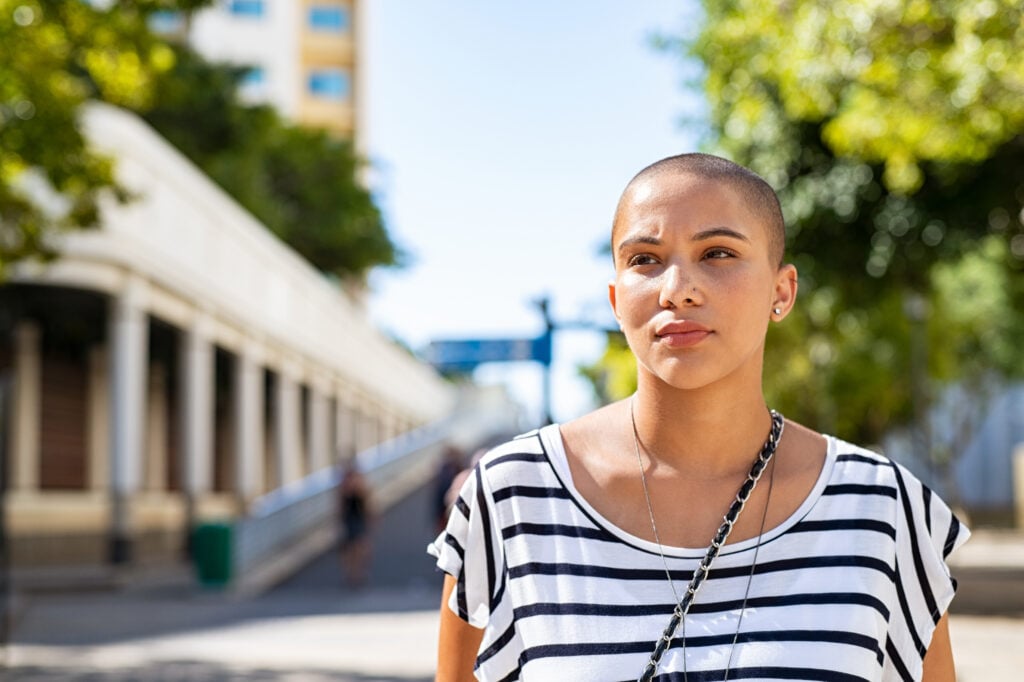LGBTQIA+ identity and mental health
Reviewed by Susan Radzilowski, MSW, LMSW, ACSW

In and of itself, being a member of the LGBTQIA+ community doesn’t put you at a higher risk of mental illness. But it can mean you face systemic discrimination and disparities in social, medical, legal, work, and other settings that may jeopardize your mental health.


What does it mean to be LGBTQIA+?
“LGBTQIA+” stands for “lesbian, gay, bisexual, transgender, queer/questioning, intersex, and asexual.” The plus sign encompasses additional gender identities and sexualities (such as pansexual, nonbinary, and genderqueer). Some people use shorter acronyms, like “LGBT” or “LGBTQ,” but these still cover the same diverse groups.
Sex vs. gender vs. sexuality
You can identify as LGBTQIA+ based on your gender, sexuality, and/or sex. What are the differences between these three terms?
Sex
“Sex” is a category based on chromosomes, hormones, internal and external sex organs, and secondary sex characteristics (like facial hair). Biological sex is divided into three categories: male, female, and intersex. When you’re intersex, you have some combination of both traditionally male and traditionally female sex organs, chromosomes, hormone levels, and/or secondary sex characteristics.
Like gender, sex is socially constructed, meaning it’s an idea that’s created and defined by our society. Most of us go our entire lives without ever having our chromosomes or hormones tested, yet we’re assigned to a specific sex at birth based on what our genitals look like.
Gender
“Gender” refers to a person’s internal sense of their own gender identity. It may be reflected by the way we express ourselves on a spectrum of traditional masculinity, femininity, and androgyny. A lot of our language for gender (and sexuality) was developed around the “gender binary,” which is the idea that we have just two opposing options for gender: “man” and “woman.” Today’s more comprehensive understanding of gender is that it’s not a binary of two opposite choices, but a wide spectrum of identities.
Common gender identities include:
- Cisgender: Your gender identity matches the sex you were assigned at birth.
- Transgender: Your gender identity differs from the sex you were assigned at birth.
- Nonbinary/genderqueer/gender nonconforming: You may identify with elements of both masculinity and femininity, or with neither. Or you may feel like you aren’t described by any standard conception of gender.
- Genderfluid: Your gender identity changes and isn’t fixed on a single gender identity.
- Queer: This umbrella term is used by many LGBTQIA+ people to describe themselves and the LGBTQIA+ community. “Queer” has historically been used in a derogatory way, but many people have long since reclaimed the word, and it’s now well established as a positive or neutral term (though the derogatory usage still exists alongside it). Because of its potential for offense, however, it should be used only by individuals who use the term to self-identify or to describe others who self-identify as queer.
Sexuality
“Sexuality” (also called “sexual identity” or “sexual orientation”) refers to our sexual feelings and sexual activities. You don’t need to have had sex to know what your sexuality is, though your sexual experiences may inform your sexual identity. As with gender, it’s important to expand our understanding of sexuality beyond binary definitions of “men” and “women.”
Different sexualities include:
- Heterosexual (or “straight”): You’re attracted to people of the opposite binary gender (women attracted to men, men attracted to women).
- Gay: You’re attracted to people of the same gender (men attracted to men, women attracted to women).
- Lesbian: You’re a woman attracted to other women.
- Bisexual: You’re attracted to people of more than one gender.
- Asexual: You don’t experience sexual attraction to anyone.
- Pansexual: You’re attracted to people regardless of their sex or gender identity.
The term “homosexual” was historically used to refer to people in the gay community, but it’s now often considered outdated or offensive and should be avoided.
Lasting effects of discrimination
A long, ongoing history of legal discrimination and oppression contributes to the mental health challenges LGBTQIA+ people face in the US and beyond.
Criminalization: Throughout history, many cultures have severely criminalized same-sex relationships, often through charges of “sodomy.” In the US, state sodomy laws existed until 2003, when the Supreme Court struck them down.
Pathology: Being gay has been inaccurately painted as an illness.1 In 1952, the American Psychological Association (APA) listed homosexuality as a mental health disorder in its first “Diagnostic and Statistical Manual” (DSM).2 This led to inhumane psychological treatments that attempted to “cure” gay people, including electric shock therapy and conversion therapy.3 The APA removed the DSM diagnosis in 1973, but conversion therapy remains legal in a majority of states.4 However, conversion therapy has been deemed unethical by mental health professional boards, including the American Psychological Association, the American Counseling Association, and others.5
Discrimination in the military: Being LGBTQIA+ was grounds for discharge from the US military from its founding, and in 1953 President Dwight Eisenhower explicitly banned gay and lesbian people from serving in the federal government. Democratic presidential administrations have made progress toward fully ending these discriminatory policies, but gay and lesbian people weren’t allowed to serve openly in the military until 2010, and transgender service members have only recently gained the right to serve freely.
HIV/AIDS epidemic: The HIV/AIDS epidemic disproportionately devastated the LGBTQIA+ community, specifically gay men. Because so many patients were gay, the Reagan administration didn’t act swiftly to develop a treatment or cure, and gay activists were left to fend for themselves and create care organizations. The Centers for Disease Control and Prevention (CDC) estimates that nearly 675,000 people died of AIDS between 1985 and 2013 in the US.6
Marriage inequality: Same-sex marriage was illegal for most of US history, and it wasn’t until 2004 that Massachusetts became the first state to legalize it. The Supreme Court finally legalized same-sex marriage in all 50 states in 2015.
Challenges to LGBTQIA+ mental health
LGBTQIA+ people still face discrimination and oppression. Homophobia, transphobia, lack of support, and health care disparities can harm a person’s mental health. LGBTQIA+ people are three times more likely to develop a mental health disorder than straight people—not because of their identity, but because their identity isn’t accepted and valued.7
Homophobia and transphobia
“Homophobia” and “transphobia” refer to negative attitudes or beliefs about LGBTQIA+ people. These beliefs often result in efforts to discriminate, oppress, and harm, and they can lead to significant health crises.
LGBTQIA+ people encounter homophobia and transphobia at every level of society. Children and teens are bullied for being gay or expressing their gender identity, often even before they’ve claimed that identity for themselves. Adults face bigotry and violence. And living in a homophobic and transphobic society can cause LGBTQIA+ people to internalize these negative views, thereby taking on the harmful, inaccurate belief that their own identity is shameful.
Lack of support
Living in a homophobic society can translate to a lack of support at every level:
- Familial relationships: Many LGBTQIA+ people face rejection when coming out to their families. This can range from a lack of acceptance to family members’ cutting off ties or becoming violent.
- Housing: As many as 40% of homeless youth identify as LGBTQIA+.8 Many LGBTQIA+ people face homelessness due to discriminatory housing practices, lack of family support, and employment discrimination.
- Legal protections: Twenty-seven states lack explicit gender- or sexuality-based legal protections for people in jobs and housing.9 Currently, no federal law fully prohibits discrimination on the basis of gender or sexuality.
- Mental health: LGBTQIA+ teenagers are six times likelier to experience depression symptoms than straight, cisgender teens; they’re also more than twice as likely to feel suicidal and more than four times as likely to attempt suicide.10
Health care disparities
LGBTQIA+ people frequently face discrimination in health care settings, whether they’re seeking care for their physical, mental, or sexual health.
Health care: Roughly 8% of LGBTQIA+ people and 27% of transgender people have been explicitly denied health care because of their gender or sexuality.11
Mental health treatment: Being gay is no longer viewed as a mental health disorder, but conversion therapy is still practiced.12 Transgender people in particular face persistent discrimination and stigma. Some providers continue to diagnose all transgender people with gender dysphoria, even though gender dysphoria has its own specific diagnosis and isn’t experienced by all trans people.13
Sexual health education: In a 2013 survey, fewer than 5% of LGBTQIA+ students had encountered positive representations of LGBTQIA+ relationships and topics in a health class.14 Students who identify as queer may not be taught about relevant safer-sex practices in school, putting them at risk of sexually transmitted infections (STIs).
LGBTQIA+ mental health resources
Find a therapist
If you’re struggling with your mental health, help is available. You deserve mental health care that supports your gender identity and sexuality. Browse our directory to find an LGBTQIA+-affirming therapist near you.
Join a support group
One of the best parts about identifying as LGBTQIA+ is the community of love and acceptance that you belong to. LGBTQIA+ people throughout history and throughout the world have overcome similar challenges to the ones you may be facing. If you want to find a supportive community, consider the following resources:
- Join a Gender and Sexuality Alliance (GSA) club at your school through the Gay, Lesbian & Straight Education Network (GLSEN).
- Find inspiration through the It Gets Better Project.
- Experience peer-to-peer support services through your local PFLAG chapter.
Get help now
If you’re in crisis and need help now, please call or text one of the following helplines for free, confidential support 24/7:
- The Trevor Project: Call 1-866-488-7386 or text START to 678-678.
- 988 Suicide & Crisis Lifeline: Call 988 or 1-800-273-TALK (8255).
- Crisis Text Line: Text HOME to 741741.

Sources
1 https://www.ncbi.nlm.nih.gov/pmc/articles/PMC4695779
2 https://www.pbs.org/wgbh/americanexperience/features/stonewall-milestones-american-gay-rights-movement
3 https://time.com/3705745/history-therapy-hadden
4 https://bornperfect.org/facts/conversion-therapy-bans-by-state
5 https://www.hrc.org/resources/policy-and-position-statements-on-conversion-therapy
6 https://www.cdc.gov/nchhstp/newsroom/docs/factsheets/todaysepidemic-508.pdf
7 https://adaa.org/find-help/by-demographics/lgbtq
8 https://truecolorsunited.org/our-issue
9 https://freedomforallamericans.org/states
10 https://mhanational.org/issues/lgbtq-communities-and-mental-health
11 https://mhanational.org/issues/lgbtq-communities-and-mental-health
12 https://www.ncbi.nlm.nih.gov/pmc/articles/PMC7054331/
13 https://www.psychiatry.org/patients-families/gender-dysphoria/what-is-gender-dysphoria
14 https://www.hrc.org/resources/a-call-to-action-lgbtq-youth-need-inclusive-sex-education
About the author
The editorial team at therapist.com works with the world’s leading clinical experts to bring you accessible, insightful information about mental health topics and trends.
Related articles

When your religion rejects you, what comes next?
Healing from religious trauma can be especially hard for LGBTQIA+ people, who...

Nonbinary people and mental health
Nonbinary people have a gender identity outside the traditional categories of...

How hormones affect your mental health
Your hormones are always in flux, which affects your mental and physical...

What is LGBTQIA+ imposter syndrome?
Even if you’re confident in your identity, this type of imposter syndrome may...
